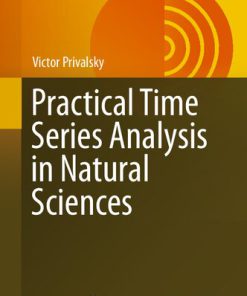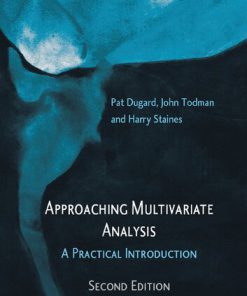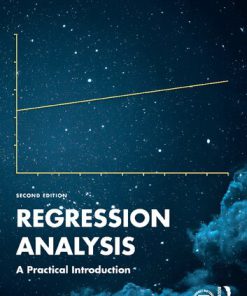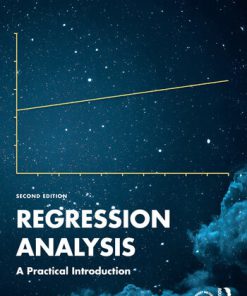Practical Esm Analysis 1st Edition Sue Robertson 1630815284 9781630815288
$50.00 Original price was: $50.00.$25.00Current price is: $25.00.
Practical Esm Analysis 1st Edition Sue Robertson – Ebook PDF Instant Download/Delivery: 1630815284, 9781630815288
Full download Practical Esm Analysis 1st Edition after payment

Product details:
ISBN 10: 1630815284
ISBN 13: 9781630815288
Author: Sue Robertson
Written by a prominent expert in the field, this authoritative resource considers radar parameters and how they affect ESM systems. It describes the ESM environment, including types of radar, pulse density, the latest radar developments and how they will be seen by ESM systems. Different types of ESM systems are described, with methods of calculation of Direction of Arrival (DOA) of pulses. Conventional wisdom about RF scan strategies for narrow-band receivers will be challenged and new methods (proven to be effective in trials) will be proposed. The book describes ESM Antenna separation, which plays a significant part in the generation of DOA errors, with examples of the effects for different situations. The book will explain the common phenomena seen in ESM systems with many examples of how to recognize issues in the ESM data and solutions for their mitigation. Techniques for visualizing ESM data and how to set up ESM trials will be given, including the simulation of the electromagnetic environment. The book also presents detailed calculations for generating emitter beam-shapes for use in simulations of pulse trains and the calculation of detection range will be useful for data analysts, trials engineers and system assessors, which are not published elsewhere. The identification of radars by ESM systems is considered in detail with ideas presented on how to generate an effective radar library.
Practical Esm Analysis 1st Table of contents:
Chapter 1: Introduction to Electronic Support Measures (ESM) Systems
1.1 ESM Systems: Overview of the RF Environment
1.2 ESM as an ELINT System
1.3 ESM as a Radar Warning Receiver
1.4 ESM Operators and Platforms
1.5 Unique Topics in This Book
1.5.1 Radar Beamshape Calculation
1.5.2 RF Scan Strategy Generation
1.5.3 Multipath Considerations
1.5.4 Multitracking Mitigation
1.5.5 Radar Identification Improvements
Chapter 2: Radar Parameters and Their Impact on ESM Systems
2.1 Pulsed and Continuous-Wave (CW) Radars
2.2 Pulse Descriptor Words (PDW)
2.3 RF
2.3.1 RF Agility
2.4 PRI
2.4.1 Fixed PRI
2.4.2 Staggered PRI
2.4.3 Jittered PRI
2.4.4 Switch and Dwell PRI
2.4.5 Pulse Group Repetition Interval (PGRI)
2.5 PW
2.5.1 Pulse Rise Times
2.6 Pulse Modulation
2.7 Radar Beamshapes
2.8 Scan Patterns
Circular, Sector, Raster, Spiral, Helical, Conical, Palmer, Nodding, Lobe Switching, Track-While-Scan, Fixed, Multiple Elevation Beam, AESA Radar Scans
2.9 Effective Radiated Power (ERP)
2.10 Polarization
Chapter 3: The RF Environment
3.1 Radar Range Equation and ESM Systems
3.2 Radar Horizon
3.3 Types of Radars and Their Functions
ATC, HS, Airborne, Ship Navigation, Weather, Threat, Cellular/Mobile Phones, LPI, AESA Radars
3.4 Radar Pulse Density
3.5 Examples of Low- and High-Pulse Density Environments
3.6 Number of Pulses Needed for ESM Detection
Chapter 4: ESM Equipment
4.1 ESM Antennas
Spiral, Sinuous, Horn, Phase Comparison Systems, Spinning Antennas
4.2 ESM Receivers
Superheterodyne, Crystal Video, IFM, Channelized Receivers
4.3 Parameter Measurement, Accuracy, and Resolution
RF, Timing, PW, Amplitude, PRI, DOA Calculations
4.4 ESM Sensitivity
Target Acquisition, Tracking, Missile Guidance, Beacon Signals, Missile Homing Systems
4.5 RF Scan Strategies
Chapter 5: Amplitude Comparison ESM
5.1 DOA Determination in Amplitude Comparison Systems
5.2 Typical Antenna Configurations
5.3 Effect of Antenna Separation on DOA Determination
5.4 DOA Errors Due to Antenna Separation
5.5 Radar Beamshape Impact on DOA Errors
People also search for Practical Esm Analysis 1st:
6m analysis example
3 p exam study guide
5-ess1-2 activities
5-ess1-1 activities
Tags:
Sue Robertson,Practical,Esm,Analysis
You may also like…
Earth Sciences - Geophysics
Practical Time Series Analysis in Natural Sciences 1st Edition Victor Privalsky
Science (General) - Science of Science
Approaching Multivariate Analysis A practical introduction 2nd Edition Pat Dugard
Uncategorized
Mathematics - Mathematical Statistics
Mathematics - Mathematical Statistics
Practical data analysis with jmp Third Edition Robert Carver
Politics & Philosophy - Social Sciences











